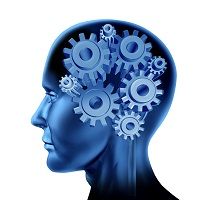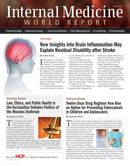Publication
Article
Internal Medicine World Report
Brain Inflammation: Why It Continues
Author(s):
Neuroinflammatory and ischemic diseases including Alzheimer's disease, Parkinson's disease, and stroke are notoriously difficult to treat. Researchers have looked for ways to quantify, understand and reduce cerebral inflammation, and to date have been able to determine that microglia-driven inflammation destroys neuronal populations.

Neuroinflammatory and ischemic diseases including Alzheimer's disease, Parkinson's disease, and stroke are notoriously difficult to treat. Researchers have looked for ways to quantify, understand and reduce cerebral inflammation, and to date have been able to determine that microglia-driven inflammation destroys neuronal populations.
A team of researchers based in Sweden have announced a significant finding that may eventually help identify suitable treatments. Published in the March 2015 issue of the journal Cell Reports, the study clarified how toll-like receptor 4 (TLR4 interacts with the protein galectin-3 (Gal3) to perpetuate inflammation.
Microglia-driven inflammation involves TLR4, but its exact role had been unclear. These researchers were able to determine that microglial cells release endogenous Gal3 in inflamed brain tissue, but do not secrete it in healthy brain tissue. Furthermore, it binds to and stimulates microglial TLR4, and creates a pro-inflammatory response in the brain.
This study employed 3 types of experiment: (1) bench tests, (2) animal experiments, and (3) human trials. They were able to demonstrate different TLR4 downstream responses depending on the stimulus.
In the animal studies, the researchers used genetically engineered mice that could not produce Gal3 and found, in these mice, myocardial infarction produced less inflammation and brain damage that in mice that possessed Gal3. They also utilized mice with Parkinson's disease and noticed similar trends toward less brain damage in mice that had no Gal3.
Additionally, the experts used brain tissue from stroke victims to determine how TLR4 and Gal3 interacted. Elevated Gal3 levels remained in this tissue long after the stroke occurred, suggesting the mechanism by which the inflammatory response perpetuates damage.
Drugs or biologics targeting the TLR4-Gal3 interaction could potentially break the vicious cycle of inflammation — some companies have already started developing potential agents.






